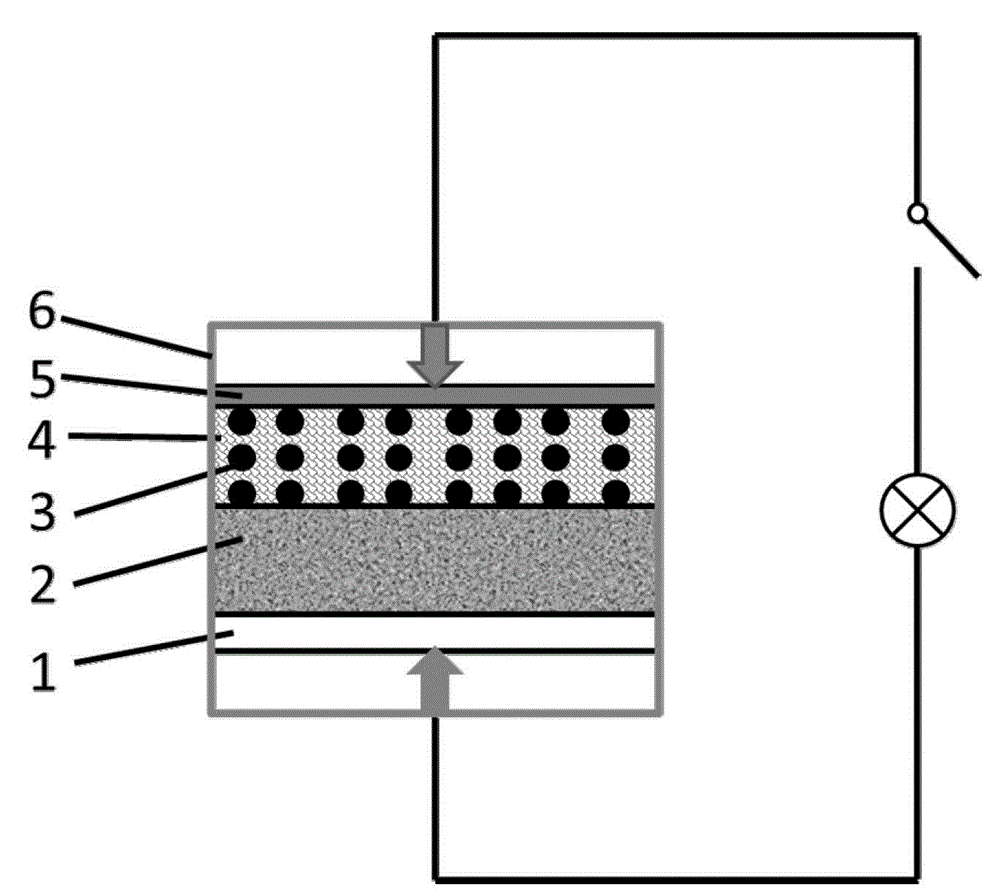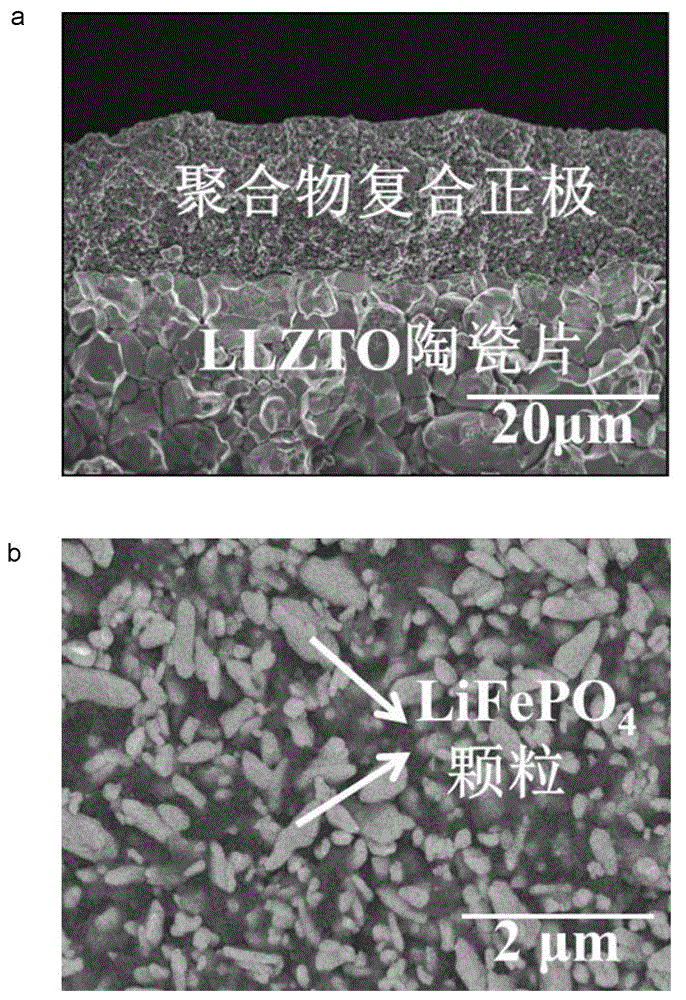Novel chip type solid secondary lithium battery supported by garnet type solid electrolyte and preparation method thereof
A secondary lithium battery, solid electrolyte technology, applied in the manufacture of electrolyte batteries, non-aqueous electrolyte batteries, secondary batteries, etc., can solve the problems of new hybrid all-solid-state battery reports, etc. Good, the effect of improving energy density
- Summary
- Abstract
- Description
- Claims
- Application Information
AI Technical Summary
Problems solved by technology
Method used
Image
Examples
preparation example Construction
[0043] Preferably, the preparation method of the all-solid-state lithium battery is characterized by comprising the following steps:
[0044] 1) According to the chemical formula Li 7-x La 3 Zr 2-x T x o 12 (x=0-1, T=Al, Ta, Nb, W, Ga, Y, Te, etc.) in the molar ratio of Li, La, Zr, T, choose LiOH, La(OH) 3 , ZrO 2 and the corresponding oxide T x o y As a raw material, the excess of LiOH is 5-20%, which is ball-milled in an alcohol medium for 10-30 hours, dried, and then calcined at 850-1000°C for 6-10 hours to obtain Li 7-x La 3 Zr 2-x T x o 12 ceramic powder. Transfer the ceramic powder into a carbon mold, and sinter it under Ar atmosphere by hot pressing at 1000-1200°C and 15MPa for 1-2 hours. Then processed into ceramic sheets of required thickness and size;
[0045] 2) In a dry atmosphere, add an appropriate amount of lithium ion conductor and organic solvent into the mortar to fully disperse or dissolve the lithium ion conductor material, and then add the po...
Embodiment 1
[0058] A new type of hybrid all-solid-state secondary lithium battery based on garnet-type solid electrolyte, the structure of the device is shown in the appendix figure 1 , the negative electrode 1, solid electrolyte layer 2, and polymer composite positive electrodes 3 and 4 used are as follows:
[0059] Solid electrolyte layer: use highly dense Li 7-x La 3 Zr 2-x Ta x o 12(LLZTO) ceramic sheet (density greater than 96%), which can not only transmit lithium ions but also protect the electrolyte layer of metal lithium, with a thickness of 0.1μm-10mm;
[0060] Polymer composite positive electrode: In an inert atmosphere glove box, add an appropriate amount of lithium salt and NMP into an agate mortar to fully dissolve the lithium salt, and then add LiFePO 4 , Add conductive carbon into the mortar, and finally take the pre-prepared PVdF solution (solvent is NMP) and transfer it to the mortar and grind it with a pestle to obtain a uniformly distributed composite positive ele...
Embodiment 2
[0063] A novel hybrid all-solid-state secondary lithium battery based on a garnet-type solid electrolyte, the structure of the device is the same as in Example 1. The preparation method of the solid electrolyte layer is the same as in Example 1, and the relative density of the LLZTO ceramic sheet reaches 99%, and its XRD is as follows: figure 2 As shown in a, it can be seen that the main phase of the ceramic is a cubic garnet structure. Using a circular Li electrode as the test electrode, the electrical properties of the ceramic sample were tested at room temperature, and its AC impedance spectrum was obtained as shown in 2b. The calculated room temperature ionic conductivity was 6.6×10 -4 S cm - 1 .
PUM
| Property | Measurement | Unit |
|---|---|---|
| Thickness | aaaaa | aaaaa |
| Conductivity | aaaaa | aaaaa |
Abstract
Description
Claims
Application Information
 Login to View More
Login to View More - R&D
- Intellectual Property
- Life Sciences
- Materials
- Tech Scout
- Unparalleled Data Quality
- Higher Quality Content
- 60% Fewer Hallucinations
Browse by: Latest US Patents, China's latest patents, Technical Efficacy Thesaurus, Application Domain, Technology Topic, Popular Technical Reports.
© 2025 PatSnap. All rights reserved.Legal|Privacy policy|Modern Slavery Act Transparency Statement|Sitemap|About US| Contact US: help@patsnap.com



